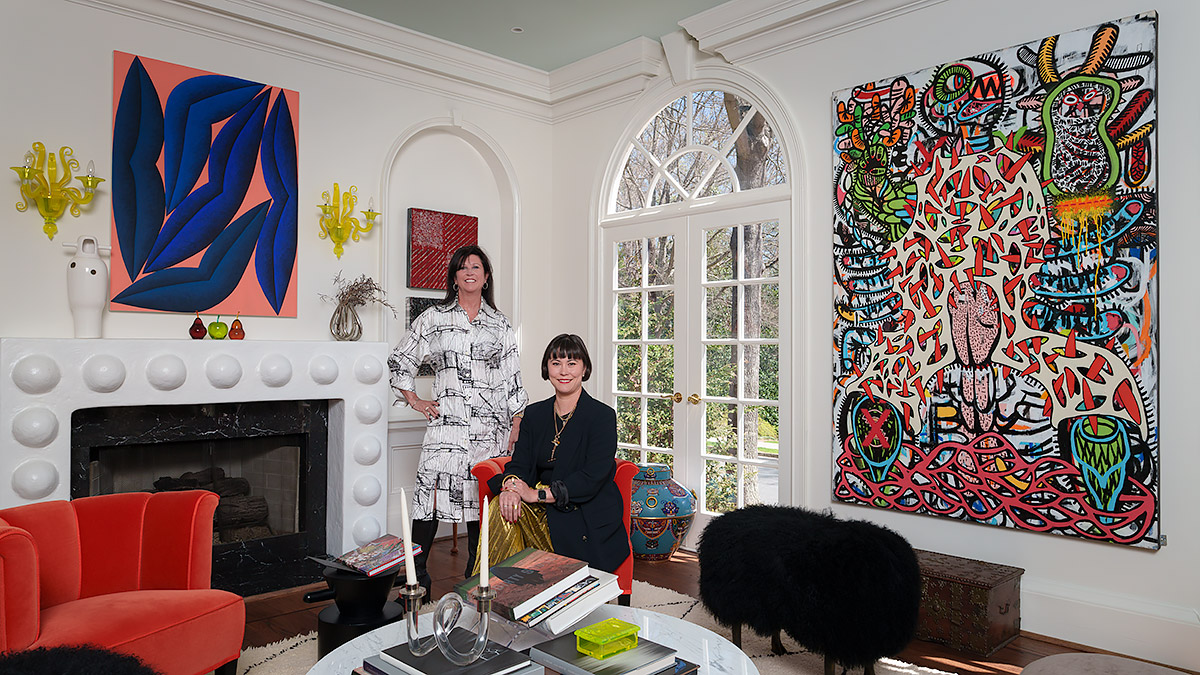One might expect contemporary art to be hanging in an austere white box gallery. For broker and art advisor Courtney Bombeck, however, that simply wouldn’t do. When creating her post-war contemporary art gallery Co-Op Art, she chose an unusual place to showcase her gallery—her traditional Buckhead home.
While the bones of her home are French Colonial, the interior design is a celebration of contemporary art, bursting at the seams with color, form, and personality by interior designer Jessica Davis of Atelier Davis. Bombeck was intentional in showcasing contemporary art in situ against the traditional architecture of her home. “People in Atlanta need to see art in context,” Bombeck says.
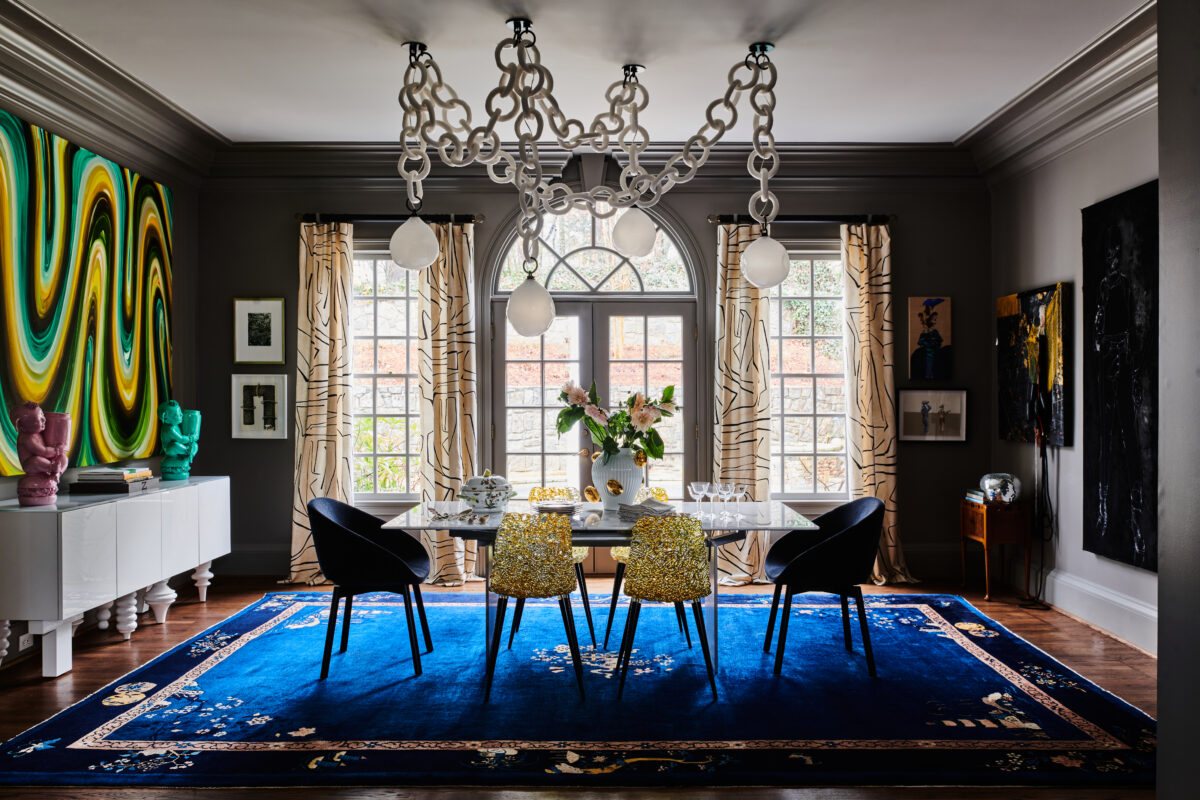
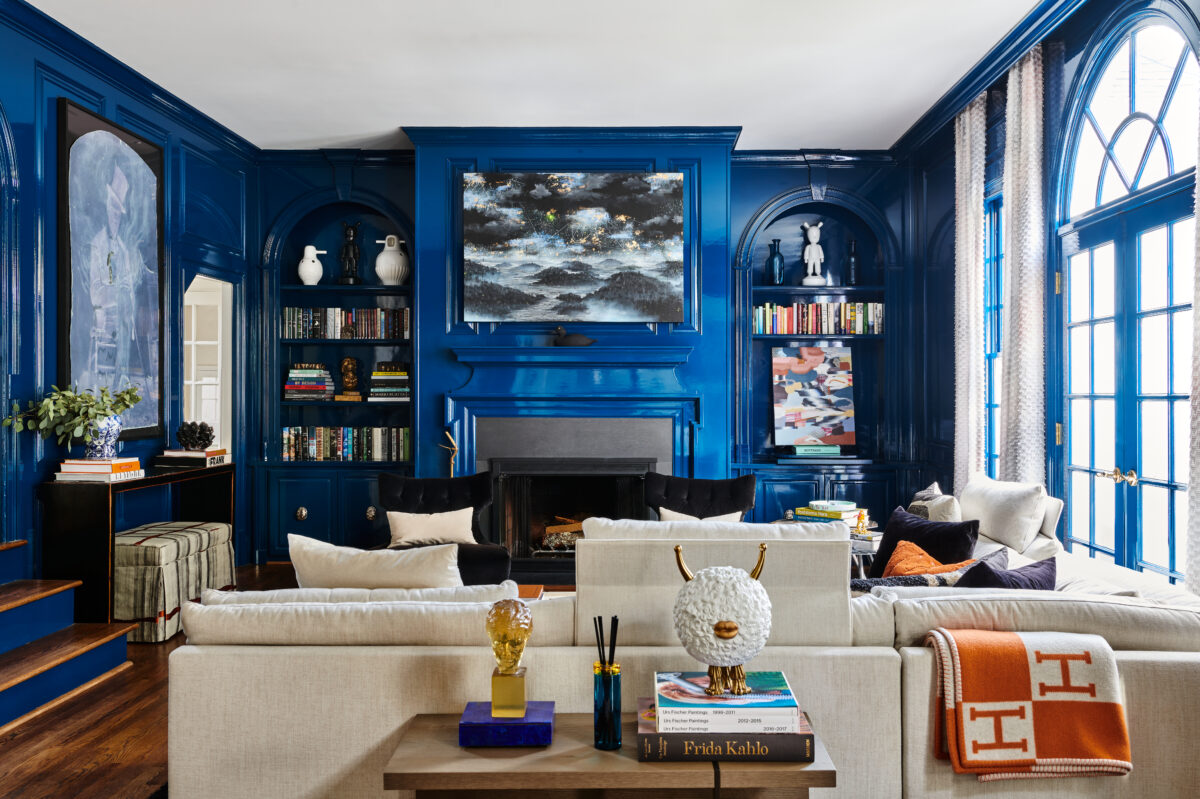
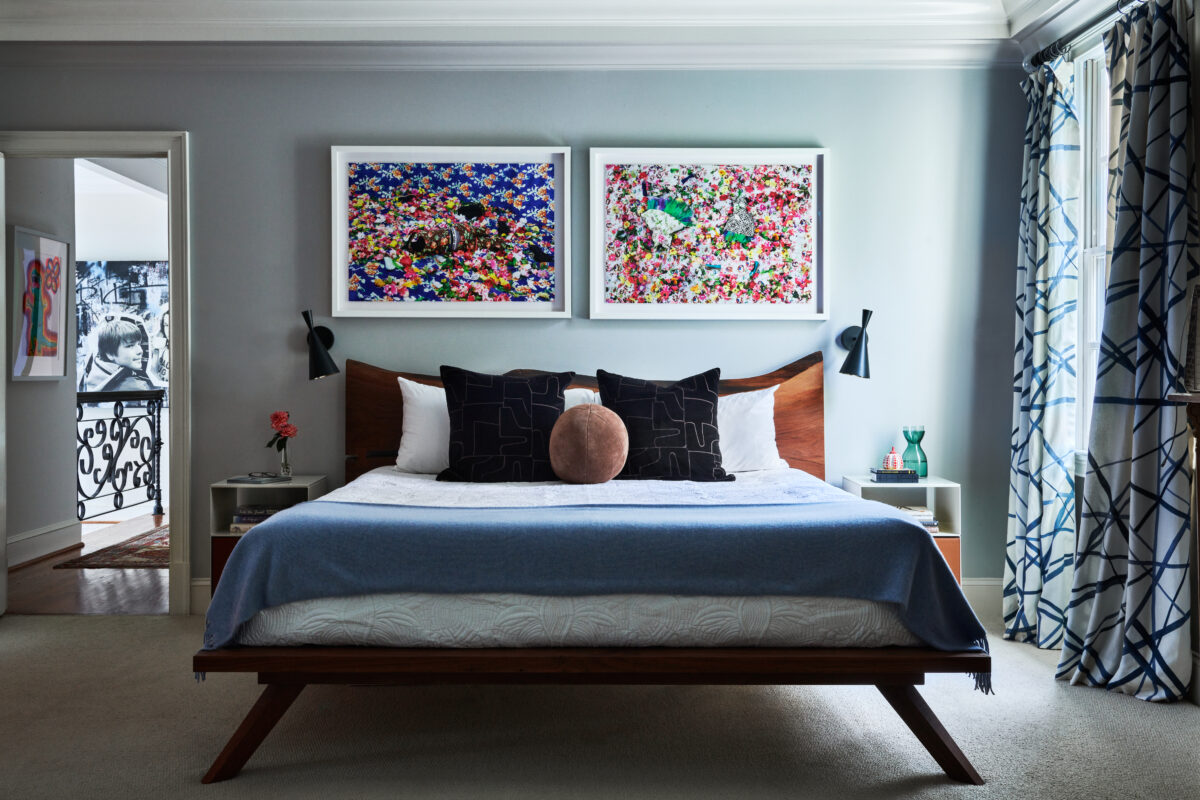
Paying attention to the nuances of her clientele has helped Bombeck become a successful gallerist. “I specialize in helping nascent collectors build a collection by introducing them to regional works by notable artists,” she says. She guides clients through the international art stage’s fairs, auctions, and notable galleries. Bombeck also works with artists such as Bojana Ginn, Michi Meko, Jodi Hays, and Vadis Turner across several mediums, helping these regional artists navigate their next steps towards an international presence.
The French Colonial home was originally built in the late 80s. “It was very traditional when we bought it—it looked like a set from Dynasty—but it had great bones,” says Bombeck. To redo the space, she called on Jessica Davis of Atelier Davis. Bombeck saw Davis’ home in The New York Times and knew they’d be kindred design spirits; the two had a further connection when they found out their husbands worked together. She liked the way Davis considered art and how she thought through the details. “I’m great at grand ideas; I’m less great at bringing them to fruition,” she quips.
Tension Over Time
Davis’ challenge was to create spaces that could accommodate Bombeck’s ever-changing art. “The house is a laboratory,” she says. Bombeck had already done much of the heavy lifting, scraping the home of dated decorative features. Next, the two decided to stay with a neutral palette to highlight the art and give it room to breathe.


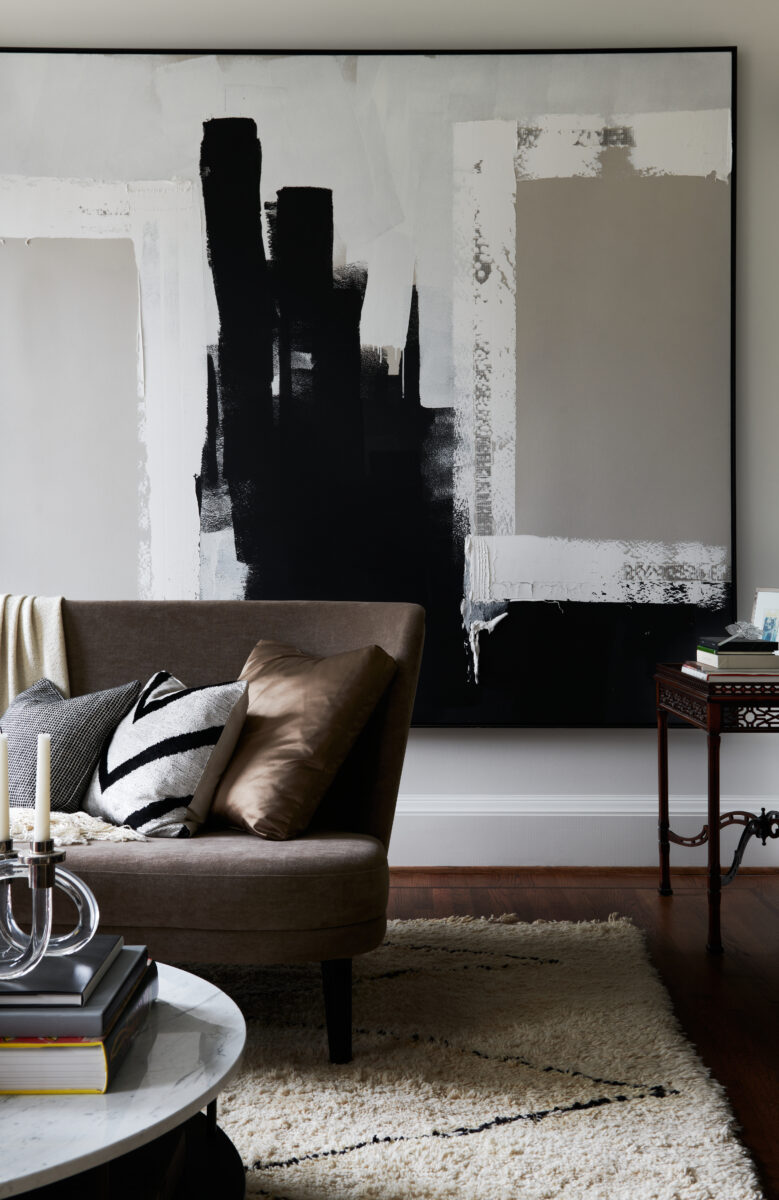
One exception was the family room. “The family room was a dark wood paneled room originally, but it was more Courtney’s language to have it lacquered in blue,” explains Davis. “We wanted to make it feel airy and Parisian. When you’re in a beautiful home in Paris, it always has traditional details but with great foils in modern art, furnishings, and millwork,” she says. Another example of this tension is in the Poliform modern kitchen, juxtaposed against a traditional layout. “When you let go of the idea that things need to match, it makes it feel more layered and curated,” says Davis.
The Art of It
Bombeck says her home gallery works to inspire her clients because every object has a story and, with Davis’ editing help, her story feels cool and unique yet still attainable. “Coming through here is a confidence booster,” Bombeck says. “People walk away thinking, ‘OK, I could do that in my way.’”
Many clients and potential clients come through and see her art and then quickly say they need to call their designers first for approval. She says the answer to that is a resounding no. “I tell them I can give them context on what the art is so that they know what they are spending their money on, but it’s their art they will be living with, so they should have a feeling about it. It’s not the designer’s house; it’s yours. I’m helping people build confidence to start collecting and trusting their eye,” she says.
Changing Atlantans’ mentalities around art is a major goal for Bombeck, who coaches her clients on reframing how to think about art: not as a decorative filler, but as true conversation pieces. “A true art collector would never buy something thinking it needs to go somewhere specific,” she says.
Both agree that designers should be partners in the process, not the end-all-be-all, especially if a homeowner wants to create an elevated look rich in layers. “A good designer can work around any piece of art,” says Bombeck. Davis achieved that in Bombeck’s home, and both are satisfied with the results. “Courtney’s home is warm and comfortable, and goes against the idea that modern art needs to live in a white box space with neutral furnishings that disappear,” she says.

